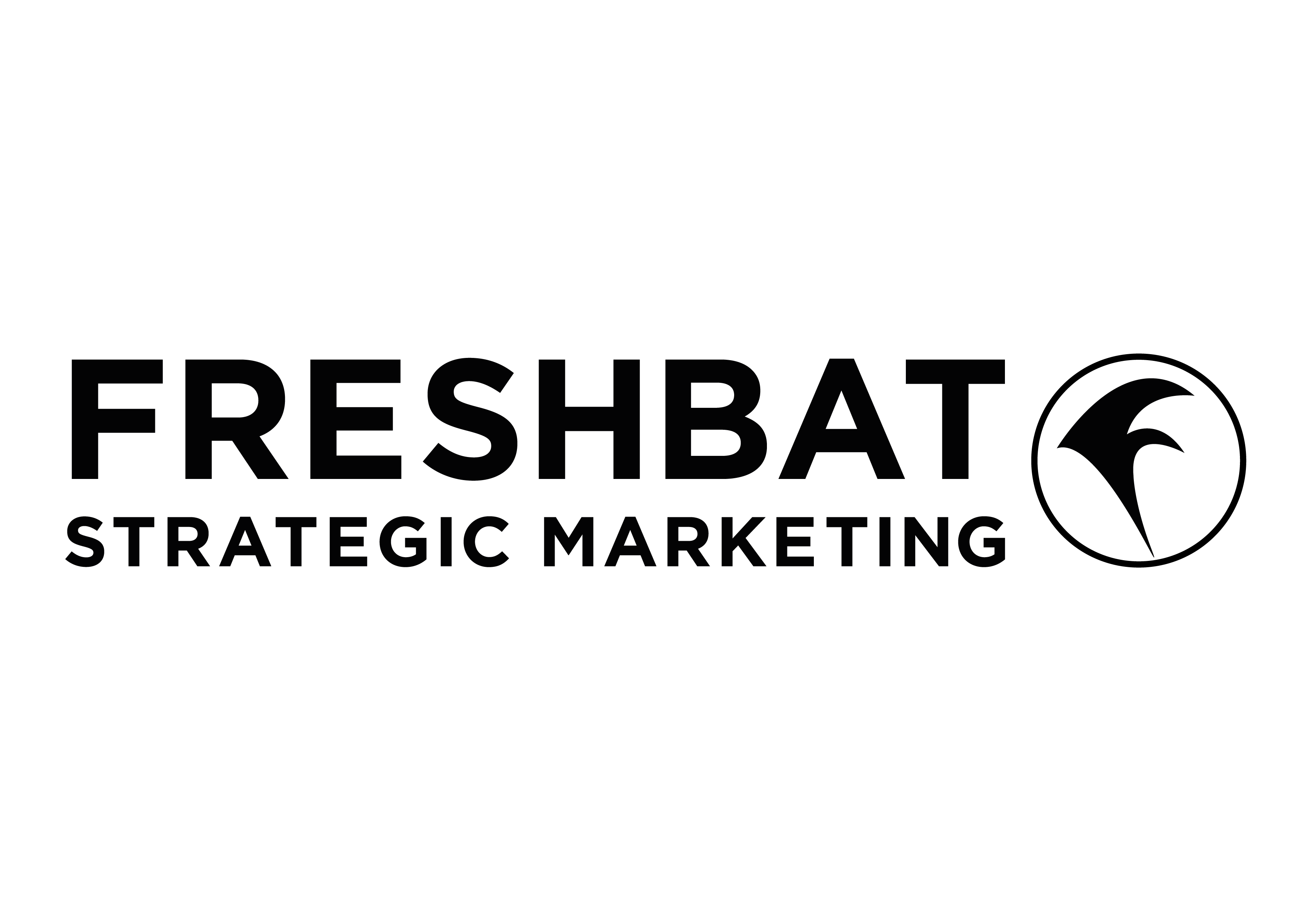Marketing can seem overwhelming when you have so many things on your to-do list. But there are some amazing free digital marketing tools to help you take your digital marketing to the next level.
Wait, there are free digital marketing tools?
As a small business owner myself, I know how hard it is to manage conflicting priorities in your business. And how, even when you set out with the best of intentions to be consistent with your marketing, it’s still a challenge. Yes, even for me when it comes to marketing Freshbat!
But you don’t have to struggle doing everything manually. If you start every week hoping you’re going to ‘find time’ to get around to marketing then spoiler alert: you probably won’t.
And then the cycle carries on again as you get to the next week and realise you still haven’t implemented any of your great marketing ideas. And on and on this painful cycle goes.
There is another way though, you’ll be pleased to know. It involves two of my favourite things: implementing processes and using tools to your advantage.
It’s not about creating so many processes that stifle your work and your creativity with your marketing.
But rather creating just enough of the right processes to set you and your business up for success.
And the best part? There’s a whole host of amazing, free tools out there that you can use to support your marketing efforts and processes.
Read on to read more about some of the hottest marketing tools you can start using to support your business right now.
I’ve made these recommendations based on tools I’m most familiar with, but there are lots of other options available too!
Social media scheduling tools
Social media doesn’t have to be as hard or time-consuming as it first seems, especially if you’re trying to share content across multiple channels. Make sure you dedicate some time every week to creating and scheduling your posts. You’ll be able to stick to a more consistent posting schedule and will be confident you’re regularly keeping your business in front of your audiences.
Hootsuite
The free Hootsuite plan allows you to connect up to 3 accounts and you can have up to 30 posts scheduled at a time. If you’re using the free version then you aren’t able to access Hootsuite analytics, which are really useful. But you’ll still be able to see your analytics in the back end of individual social media platforms – just make sure you have this set up on your individual accounts.
Tweetdeck
Tweetdeck is Twitter’s own free solution for scheduling tweets and managing your account. You can create various streams within the platform so you can easily see your own activity as well as checking out what other accounts are up to. I’d highly recommend this for any business that uses Twitter as a key social media channel.
Facebook Business Suite
Facebook Business Suite (formerly Facebook Business Manager) is where you can schedule posts across your Facebook and Instagram accounts as well as see your analytics. A few things to note: unlike Hootsuite, once you’ve scheduled your posts there doesn’t seem to be an option to edit them. So make sure you proofread before scheduling! You can also only see analytics on your Facebook and Instagram pages once you have over 100 likes/followers.
Design software
In an ideal word, you’d be able to outsource all your design requirements to a wonderful designer who would do all of your design work for you. The reality for your small business might be different though… you probably can’t afford to keep paying for a designer to update the smallest graphics every time you want to put a post on social media or update a heading on your website. Fortunately, there are some free design tools that can help!
Canva
Free Canva is pretty great, to be honest. There are some restricted features for free account users, such as resizing documents, certain fonts and transparent background PNGs, but for basic design work that keeps you on brand, this is the one to look out for. Another great thing to be aware of is that a lot of designers are happy to create a suite of designs for your brand within Canva so that you can then edit them whenever you need to, without having to pay for more design work.
Email marketing software
I see a lot of debate about whether email marketing is dead or not and I have to say: it’s very much alive and well. If you’re not already building an email list, you should be! But once you have your list of contacts, you need to make sure they’re receiving all the information they’d like to have about your wonderful business. The main reason you should use email software rather than your standard email? To bypass those lovely spam filters. If you want to progress onto marketing automation, you’ll need to pay for it but until you get to that point, you can take advantage of these free options:
Mailchimp
Mailchimp is one of those marketing staples that’s quite old school but a lot of marketers stick with it because, well, it works. There’s also a free plan so if you don’t have a lot of contacts and you just want to get started with making your email marketing more professional, you don’t need to look much further. You can build basic templates that align with your brand quickly and easily, and it works by adding blocks to make up your email. You can easily add and customize those all-important call to action buttons too!
Hubspot
You may know that Hubspot is a full customer relationship management (CRM) system, but did you know they also have a free plan you can use to perform basic CRM functions like storing contacts and email marketing? With the free plan, you can set up a form for your leads to enter their details and go straight into a list for you to contact. This is great for email communications like newsletters. And the best thing is, you can create professional-looking emails within Hubspot and track key metrics like open rate and click-throughs from your emails, without paying a penny.
Website analytics
If you don’t have analytics set up for your website, you need to do that. Right now. Do not delay. Your website is the digital equivalent of your shop front and understanding key metrics like volume of visitors to your site and most viewed pages is critical to knowing what your business growth looks like. It will also tell you whether or not your marketing is working and, most importantly, what marketing is working to get visitors to your site.
Google analytics
Google analytics can provide you with a wealth of valuable information for your business to inform your marketing strategy. At a basic level, you can easily see how many visitors and page views you’ve had on your website. As you dig deeper, you can also see your most popular pages, visitor demographics like age and location, where they came from (e.g. social media channels, other websites, searching for you directly) and even what browser and device they used to access your website. These insights will help you build up a better picture of your website audience and who is engaging with your content.
Google search console
While Google analytics is more focused on the people who visit your website and associated information, Google search console is more focused on how people are searching for and finding your website. You need to set up both to be able to truly get to grips with your website and how to optimise it to convert your visitors to paying customers.
Project management tools
I firmly believe that great project management is key to success if you want to do great marketing. You don’t need a Prince2 qualification to be able to apply basic project management principles to your marketing – sometimes it just requires a few tools to help you keep on top of your marketing tasks.
Trello
Trello is one of my favourite tools for project management. It’s very user friendly and free to use for small teams. You can have unlimited cards and unlimited users on the free account which means you can get a lot out of it without signing up for a paid plan. The look and feel is very straightforward and customisable, with lots of options for different labels, lists and deadlines so you’ll never forget when a marketing task is due.
DIY project plan
Last but not least, this is my not-so-secret weapon in my marketing planning arsenal: the DIY project plan. I create mine in Excel as it’s easy to input formulae to enable you to highlight dates and see what you priorities are. It’s a Gantt chart that’s set up with agility in mind so you can easily adjust tasks and deadlines as and when new priorities come up. And of course, Excel project plans are completely free for you to create yourself!
This is just a snapshot of some of the best free marketing tools available to your business in 2022. Of course, there are lots more that I haven’t gone into in this post, but the ones I have highlighted are all tools I use with my clients and with Freshbat on a regular basis.
If you need help with your marketing strategy and what marketing tools can help your business, get in touch to find out how I can help you start enjoying marketing!


